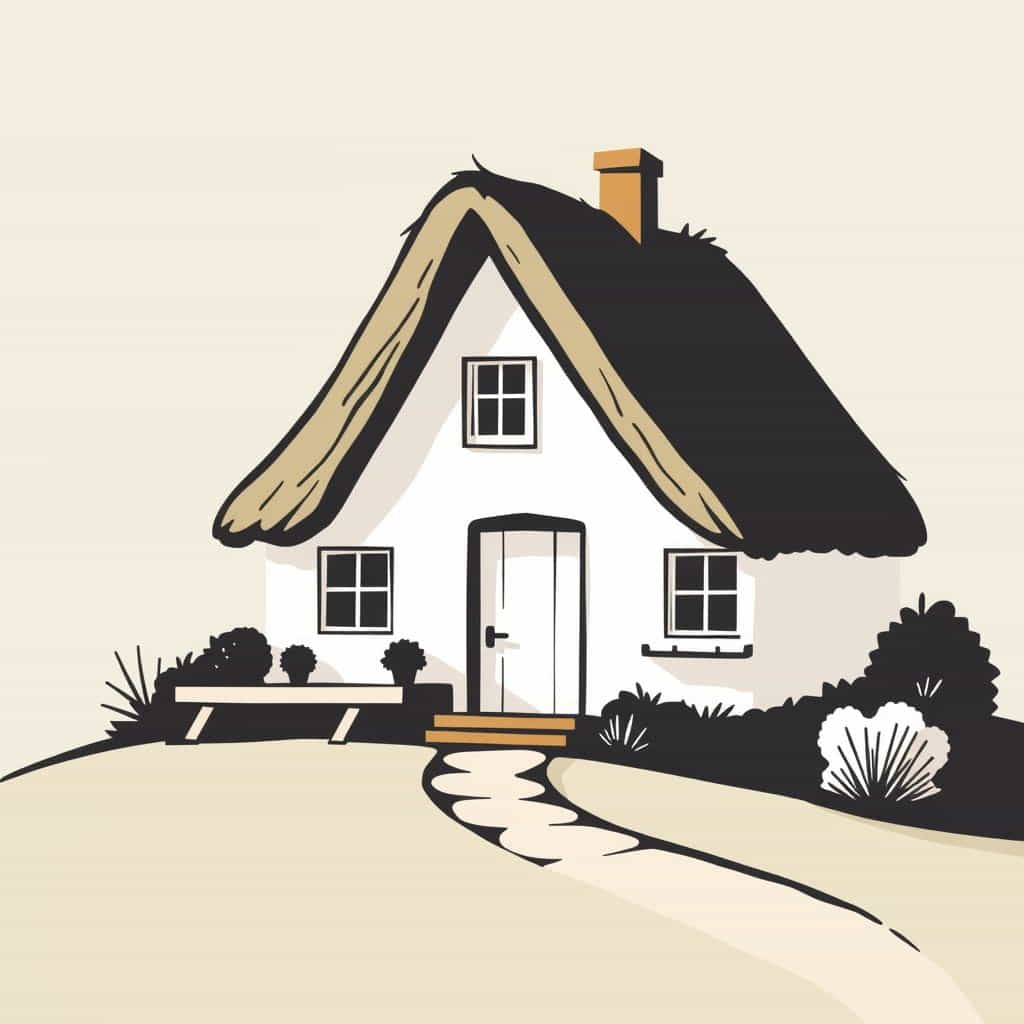A thatch house is a type of home with a roof made from dry vegetation such as straw, reeds, palm leaves, or grass. Thatched roofing has been used for centuries in many parts of the world due to its natural insulation properties, durability, and aesthetic appeal.
Thatch houses are commonly found in rural areas, tropical regions, and historic villages. They offer a unique blend of tradition, sustainability, and functionality, making them a popular choice for eco-friendly living.
History of Thatch Houses
Thatched roofs have been in use for thousands of years. Evidence of thatching dates back to ancient Egypt, medieval Europe, and early Asian civilizations. In the past, thatching was a common roofing technique due to the abundance of materials and its effectiveness in protecting homes from the elements.
In Europe, particularly in the UK, thatched cottages became iconic structures, while in Africa and Asia, palm thatching was widely used in tropical regions. Today, thatch houses are often seen in heritage villages, resorts, and eco-friendly housing projects.
Advantages of Thatch Houses
1. Natural Insulation
Thatch roofs provide excellent insulation, keeping homes cool in summer and warm in winter. The thick layer of dried vegetation traps air, reducing heat transfer.
2. Eco-Friendly Material
Since thatching uses renewable and biodegradable materials like reeds and straw, it is an environmentally friendly roofing option.
3. Aesthetic Appeal
Thatch houses have a rustic charm that blends beautifully with natural landscapes, making them popular in resorts and countryside settings.
4. Durability and Strength
When properly maintained, thatched roofs can last 30 to 50 years. High-quality thatching materials and expert craftsmanship ensure longevity.
5. Lightweight Structure
Thatched roofs are lighter than tiled or metal roofs, reducing the stress on the building’s foundation and structure.
Types of Thatching Materials
1. Water Reed
Water reed is one of the most durable thatching materials, commonly used in European thatch houses. It can last up to 50 years with proper maintenance.
2. Straw
Straw thatching is commonly used in rural cottages and is more affordable than water reed. However, it requires regular upkeep to prevent damage.
3. Palm Leaves
In tropical regions, palm leaves are widely used for thatching due to their availability and natural waterproof properties.
4. Grass Thatching
In Africa, long grasses such as elephant grass are commonly used for thatched roofs, providing natural cooling and weather resistance.
How a Thatch House Is Built
Building a thatch house requires skilled craftsmanship and a strong framework. The process involves several steps:
1. Framework Construction
The house’s structure is typically made from wood, bamboo, or mud bricks to support the thatched roof.
2. Layering the Thatch
Thatching involves layering dried vegetation tightly together, starting from the bottom and working upward. This technique ensures proper water runoff.
3. Securing the Thatch
Thatch is secured using rope, wooden pegs, or wire, ensuring a tight fit to withstand strong winds and heavy rains.
4. Finishing and Waterproofing
A well-built thatch roof has a steep slope to drain rainwater efficiently. In some regions, special coatings or fire-resistant treatments are applied for extra protection.
Maintenance and Care for Thatched Roofs
Proper maintenance is essential to extend the lifespan of a thatched roof. Key maintenance practices include:
-
Regular Inspections: Check for leaks, moss growth, or loose sections.
-
Pest Control: Protect the roof from birds, insects, and rodents that may damage the thatch.
-
Fire Prevention: Apply fire-retardant coatings and keep chimneys well-maintained.
-
Re-Thatching: Over time, the outer layers may need replacing to maintain durability.
Common Challenges of Thatch Houses
Despite their benefits, thatch houses also present some challenges:
1. Fire Risk
Thatch is a flammable material, making it essential to have fire-resistant treatments, chimneys with spark arrestors, and firebreaks.
2. Moisture and Mold
In humid climates, thatch can retain moisture, leading to mold growth. Proper ventilation and a well-designed roof slope help prevent this issue.
3. Maintenance Costs
While thatch houses are cost-effective initially, maintenance can be expensive, especially for large roofs requiring frequent repairs.
4. Pests and Birds
Thatched roofs can attract birds, rats, and insects, which may cause damage if not controlled.
Modern Uses of Thatch Houses
Although traditional thatch houses are less common in urban areas, they are still used in various ways:
-
Eco-Resorts and Lodges: Many tropical resorts use thatched roofing to create a natural and sustainable aesthetic.
-
Heritage Homes: Some countries preserve historic thatched houses for tourism and cultural heritage.
-
Sustainable Housing: Thatch is being explored as a green building material for modern eco-friendly homes.
A thatch house is a timeless architectural style that combines beauty, functionality, and sustainability. While it requires maintenance, the benefits of natural insulation, eco-friendliness, and aesthetic appeal make it an excellent choice for those seeking a unique and environmentally conscious home. Whether for traditional villages or modern resorts, thatched houses continue to be a symbol of cultural heritage and sustainable living.
